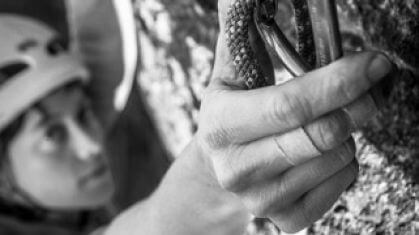
One of the most common questions people ask us here is ‘what’s the difference between top rope, sport, traditional climbing?’
When you’re new to climbing it can feel like travelling to a new country where everyone is speaking a foreign language.
Today we’re going to translate three of the most popular styles of climbing in Australia: top tope, sport and traditional climbing.
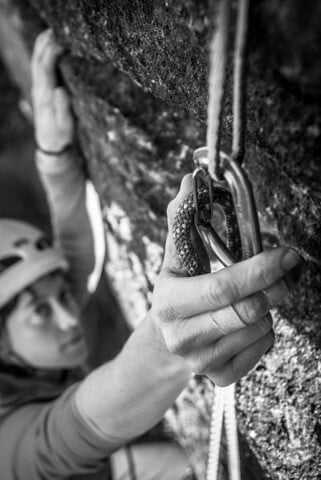
Top rope climbing
Top rope climbing is the style of climbing you find most often in indoor climbing gyms. It’s a great style for beginners who want to focus entirely on the movement of climbing. You can also top rope outside, which is a fantastic introduction to climbing on real rock.
How am I protected?
When top roping, the rope goes from the climber to an anchor at the top of the climb and back down to the belayer. The belayer’s job is to protect the climber if they fall. They have a belay device attached to their harness. The rope goes through this device and the belayer holds the rope in a particular way, belaying and ‘locking off’ the rope. This introduces friction and allows the belayer to arrest a fall if the climber lets go.
As the climber goes up, the belayer takes in slack, keeping the rope firm on the climber’s harness.
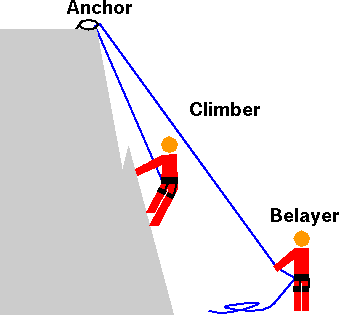
N.B. This image does not demonstrate correct belay technique
What if I fall?
With an attentive belay, a top rope climber who falls should never fall more than a metre or so. Most of this distance is caused by the stretch in the rope, making the fall more comfortable and ‘dynamic’.
Top roping can be done indoors or outdoors, and is a popular style for beginners, as it allows climbers to focus entirely on their climbing technique without having to worry about the rope.
Sport climbing
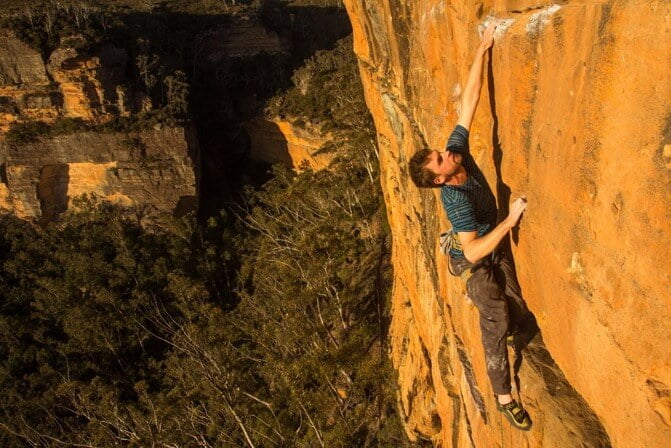
Sport climbing is one of the most popular styles of climbing in the Blue Mountains. With hundreds of world class sport routes across many different climbing areas, it’s easy to see why. Sport climbing calls on – and develops – balance, good climbing technique, mental and physical strength, precision, and calculated risk-assessment.
How am I protected?
In sport climbing, the rope doesn’t go straight through an anchor at the top of the climb. Instead, sport climbers lead climb. This involves climbing up with the rope attached to their harness and clipping it into a series of fixed anchor points along the route, usually a few metres apart. These anchor points are usually bolts in the rock that climbers clip quickdraws through, or carabiners fixed to an indoor climbing wall. As you climb up, the belayer feeds out and takes in slack in the rope, allowing you to progress and clip into protection. If you fall, the belayer will lock off their belay device and arrest the fall.

N.B. This image does not demonstrate correct belay technique
What if I fall?
With an attentive belay, you will fall twice the distance between your harness and the last bolt you clipped, plus rope stretch, plus the distance that your belayer jumps or is lifted by the force of the fall. That’s a mouthful! In short, lead falls can be a lot longer than people expect. An experienced climbing team is continually making assessments around the likelihood of a fall and the best position for the belayer and climber in the event of one. Under the right circumstances, a skilled belayer can arrest huge falls without injury to the climber.
Good judgment, training and experience are required when leading climbs. Learning to lead indoors can be a good introduction. When lead climbing outdoors, there can be large distances between points of protection and many other variables, for example rock ledges, caves and sharp rock. Skilled belaying and leading techniques, professional training and solid risk management can mitigate many of these risks.
Traditional climbing
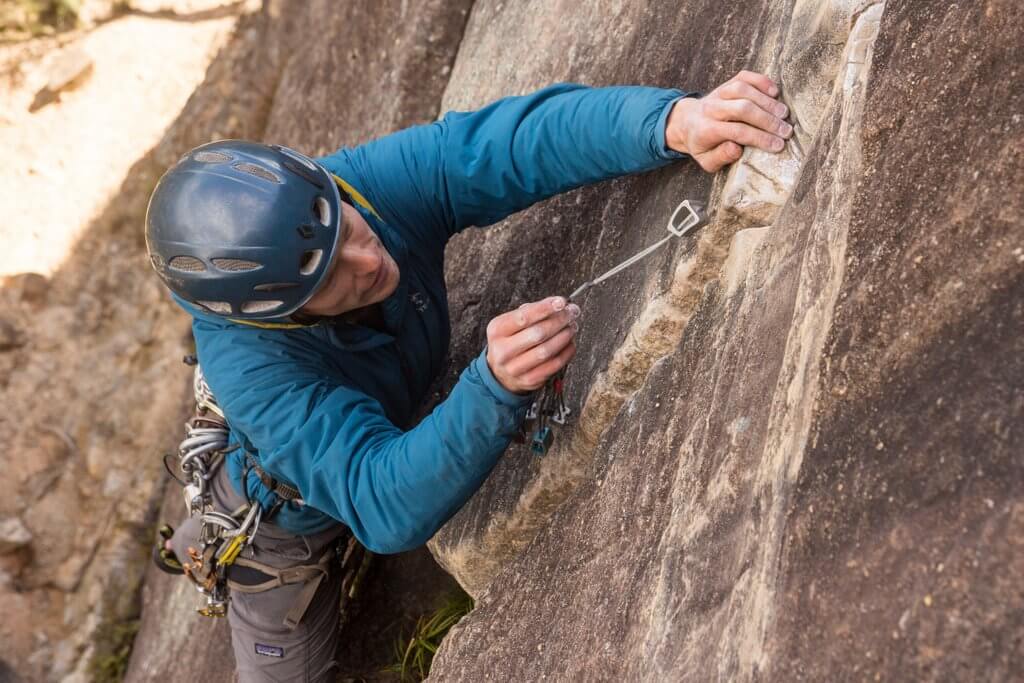
Traditional (or trad) climbing finds its roots in the high mountains, and involves using removable gear to protect yourself while climbing. Learning the art of traditional climbing opens up adventurous routes all over the world, from Patagonia to Yosemite and, of course, across the Blue Mountains. Generally people start with sport climbing and progress to trad. However, some climbers go straight to trad. Traditionally this would involve a long apprenticeship following experienced climbers on a range of routes, but nowadays these skills can be gained through climbing courses as well.
How am I protected?
Like sport climbing, traditional climbing involves leading, but instead of using fixed gear like bolts for protection, trad climbers carry a rack of removable trad gear such as wires, camming devices and hexes. They climb up cliffs without any bolts, placing removable protection in the rock as they climb.

Traditional gear: cams and wires (also called nuts or chocks)
Learning where and how to place trad gear is a skill that takes time and commitment to master. Every placement is different, and many factors need to be taken into consideration. However the rewards are great, as traditional climbing opens up a world of climbing opportunities available only to the initiated.
What if I fall?
This is similar to a lead fall when sport climbing – except that you are falling on gear that you placed yourself! Like any lead fall when rock climbing outdoors, there are many factors to consider. It’s important to seek instruction from trusted, experienced veterans or qualified instructors before venturing out on your own.
Then you can let the good times roll.
That’s it for today. If you have any questions feel free to contact us.
P.S If you want to learn more of the mysterious language of climbing, you can check out our climbing glossary here.


